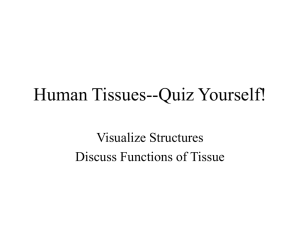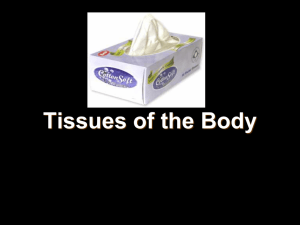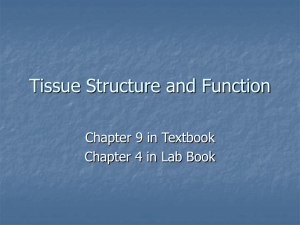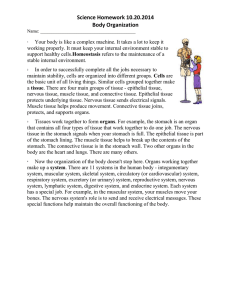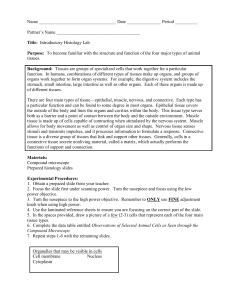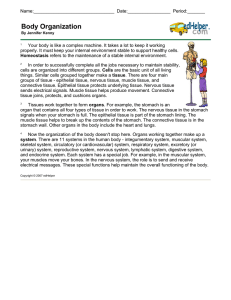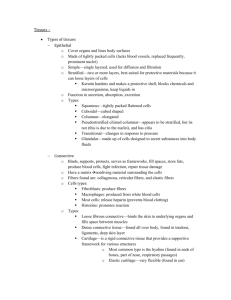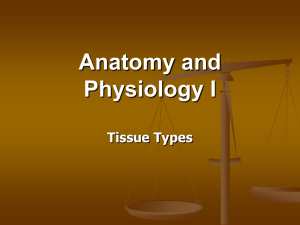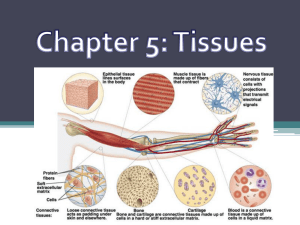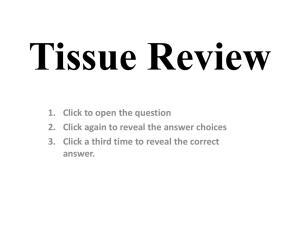Human Tissue Types
advertisement
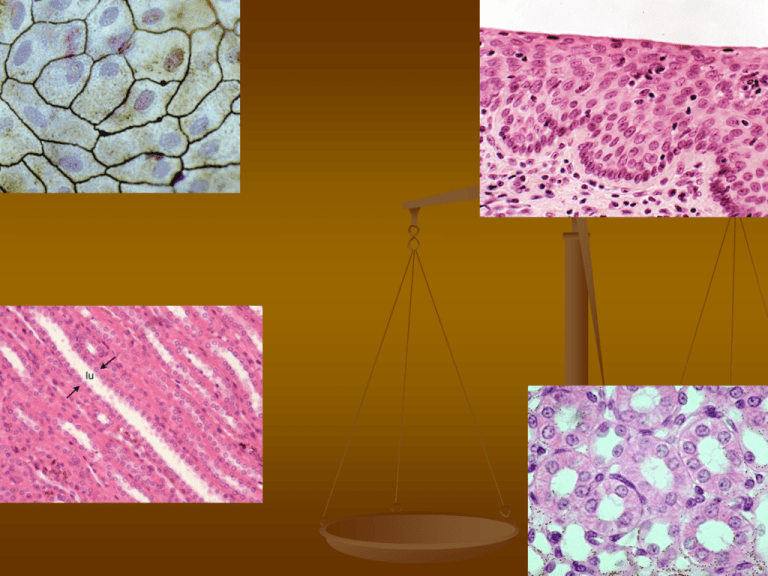
Anatomy and Physiology I Tissue Types SAP1. Students will analyze anatomical structures in relationship to their physiological functions. d. Relate cellular metabolism and transport to homeostasis and cellular reproduction. e. Describe how structure and function are related in terms of cell and tissue types. ESSENTIAL QUESTION How does the structure of human tissue relate to its anatomical function? Key Terms Histology: the study of tissues. Tissues: groups of cells which are similar in structure and which perform common or related functions. Four Basic Kinds of Tissues Epithelial Tissue Connective Tissue Muscle Tissue Nervous Tissue Epithelial Tissue Epithelial Tissue Locations: Covers the body Lines the cavities, tubes, ducts and blood vessels inside the body Covers the organs inside body cavities Epithelial Tissue Functions: Protection from physical & chemical injury, Protection against microbial invasion, Contains receptors which respond to stimuli, Filters, secretes & reabsorbs materials and Secretes serous fluids to lubricate structures. Connective Tissue Connective Tissue: Most abundant & widely distributed tissue Connective Tissue Functions: Connects, binds and supports structures, Tendons, ligaments, etc. Protects & cushions organs and tissues, Insulates (fat) and Transports substances (blood). Muscle Tissue Muscle Tissue: Associated with the bones of the skeleton, the heart and in the walls of the hollow organs of the body. Muscle Tissue Functions: Movement Locomotion Maintains posture Produces heat Facial expressions Pumps blood Peristalsis Nervous Tissue Nervous Tissue: Main component of the nervous system, ie., brain, spinal cord & nerves. Nervous Tissue Functions: Regulates & controls body functions Generates & transmits nerve impulses Supports, insulates and protects impulse generating neurons. Specific tissue types & representative cell types we will review: epithelial connective Squamous Cuboidal Columnar Adipose Bone Hyalaine cartilage muscle nervous Squamous Epithelium Simple – one cell thick Forms solid layer of cells which line blood vessels, body cavities & cover organs in body cavities Stratified – multiple layers Forms epidermis Cuboidal Epithelium Cuboid Cells Duct Cuboid Cells Duct Simple – one cell thick Roughly cube shaped Line ducts in kidneys, etc, where reabsorption and secretory activities take place. Columnar Epithelium Simple – one cell thick Column shaped (long & narrow) Line digestive tract where reabsorption & secretion occurs. Pseudostratified – gives the appearance of more than one layer of columnar epithelial cells Specific Connective Tissue Types: Adipose Bone Hyaline cartilage Connective - Adipose Honeycomb or chickenwire appearance Stores energy (fat) Insulates Supports & protects organs Connective - Bone Tree ring-like appearance Supports & protects Mineral storage Fat storage Blood cell production Connective – Hyaline Cartilage Supports while providing flexibility Absorbs compression between bones in joints (articular cartilage) Holds open respiratory passages Most abundant type of cartilage in body Specific Muscle Tissue Types: muscle (skeletal) Cardiac Smooth Muscle - Skeletal Muscle fibers (cells) long, parallel & cylindrical With many nuclei (multinucleate) Striations (cross stripes run perpendicular to the cells Produce voluntary movement Locomotion Heat Specific Nervous Tissue Types Nervous – Neuron Branching cells with many long processes Large central nucleus Transmit impulses from one area of the body to other areas Regulate activities through neuron impulses

